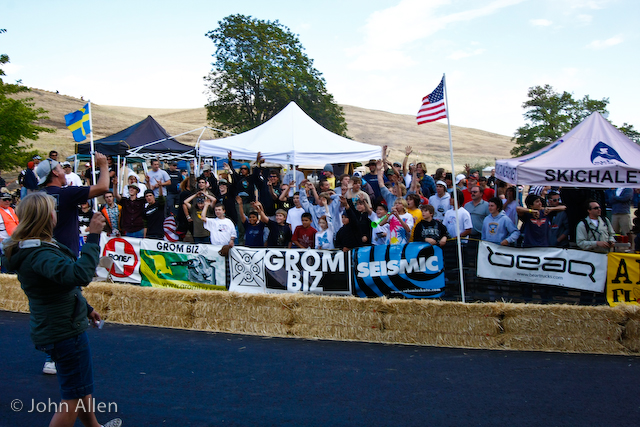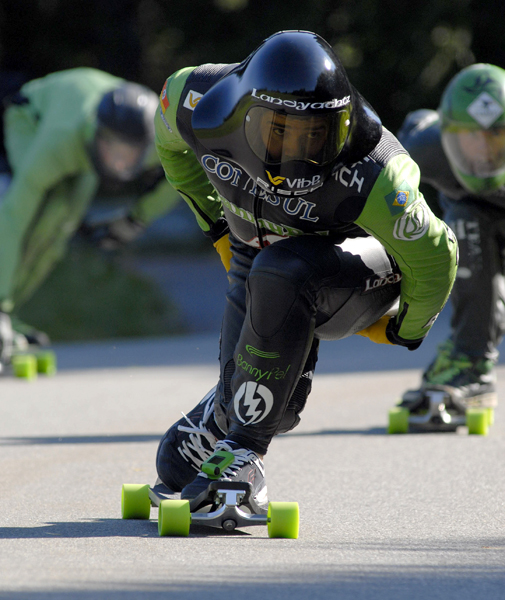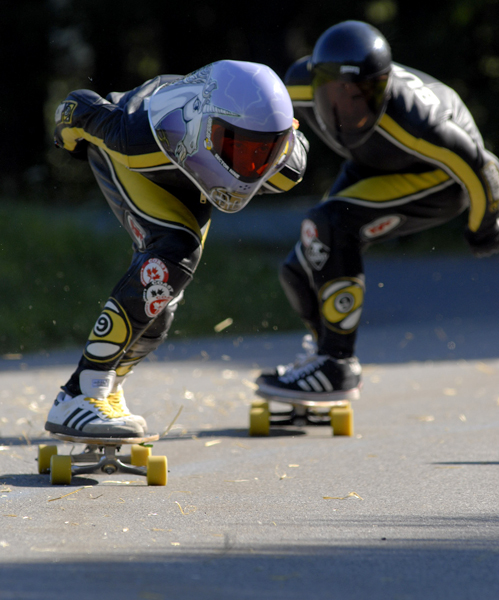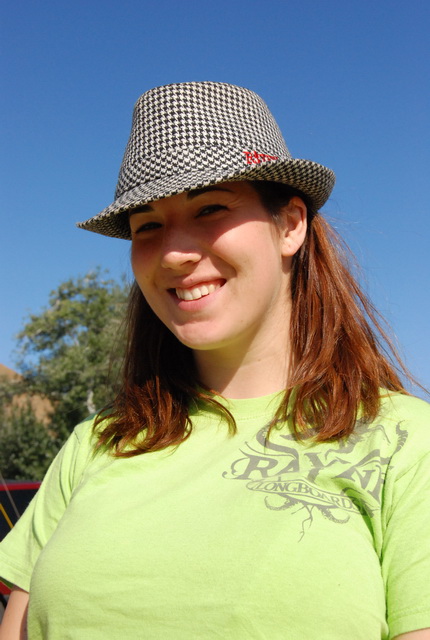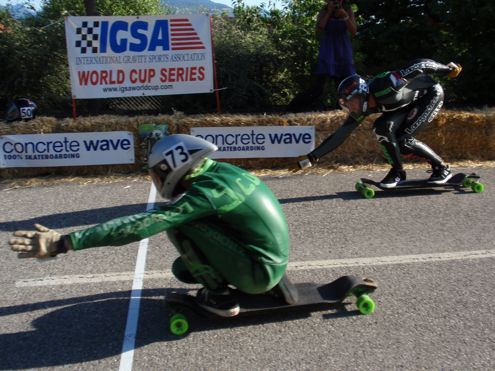History of the IGSA
The International Gravity Sports Association was founded in 1996 when a group of street luge and downhill skateboard enthusiasts recognized the need for fair, unbiased leadership for the sport. Since its inception, the goals of the association have been to foster strong and fair competition, to provide reasonable rules, to administer the competition program with impartiality, and to reduce the hazards associated with the sport.
 |
The first IGSA event was held in May 1997 in San Bernardino, California. A few months earlier, IGSA Founder Marcus Rietema had been awarded the “Street Luge Sport Organizer” contract for the 1997 ESPN X Games to be held in Oceanside, California. The San Bernardino Grand Prix served as the open qualifying event for the 97’ X Games. In the early years, the IGSA events featured Street Luge only. In 2000, the IGSA added classes for Downhill Skateboarding, Classic Luge, Inline Skating, and Gravity Bike. This brought more competitors to each race and for the first time organizing races became financially viable for event organizers.
2001 was a pivotal year in the IGSA’s history. It was the year the IGSA World Cup Series was born and included big events in South Africa, Austria, Utah, and the X Games in Philadelphia. For the first time the organizers on different continents were working together under the common sanction of the IGSA. At the end of the year the IGSA suffered a serious blow when ESPN decided to exclude street luge from future competitions. The IGSA spent the next few years in survival mode. Many of the established street luge stars abandoned the sport with the demise of the X Games. The sport continued to grow in Europe with the Hot Heels event, but everywhere else it went into survival mode.
2002 started off with the huge Red Bull DHX event in Cape Town. Later that year, Hot Heels in Kaurnatal, Austria hosted the first IGSA World Championships. By 2003, Hot Heels was the last surviving mega event and the future was uncertain. 2004 showed that Downhill Skateboarding would become the prominent category of the sport. Red Bull Almabtrieb in Germany replaced the now defunct Hot Heels, hosting the 2004 World Championships. For the first time, the number of Downhill Skateboarding entries exceeded those in Street Luge. In 2005 the Are Mountain Games in Sweden were paired with the World Championships in Jungholz, Austria over a two-week period. This proved to be very popular with the international riders; with two first class events being held back to back.
2006 saw the IGSA World Cup Series expand into South America for the first time with the RDH Rio Downhill. A few months later the Are Mountain Games returned, followed by the World Championships in Switzerland. The World’s were especially significant because 100 entrants were achieved in Downhill Skateboarding. The IGSA World Cup Series now had events on four continents (Africa, Europe, North America and South America).
Although the IGSA had World Cup events in North America, none of them were able to attract significant numbers of downhill skateboarders. There were big scenes in both the US and Canada, but the skaters weren’t supporting the events. Everything changed with the advent of the Maryhill Festival of Speed in 2007. For the first time there was a multi-day festival type of race modeled after those in Europe and it was a huge success. Large numbers of top racers from Europe also attended the event. With the inclusion of all the top racers in North America, the World Cup Series took off.
2008 was the year the IGSA World Cup came of age. The season started off in Australia on the famous Mount Panorama motor racing circuit. It marked the first time the Series visited Australia and the event was top notch. Next came a three-race swing in Europe with events in France, Germany and Austria. Maryhill hosted the 2008 World Championships and the event sold out of 200+ entries in only seven hours! Eastbourne, England followed with a solid event and then it was off to Teutonia, Brazil where Downhill Skateboarding speeds peaked at an excess of 120 km/h (75 mph). The IGSA World Cup culminated with the season finale in Kogelburg, South Africa last December. 2008 was also significant for the IGSA because it marked their return to major network television when NBC’s “Jeep World of Adventure Sports” covered Maryhill.
With a strong line up of events and the world’s best downhill skateboarders and street luge racers competing for the IGSA World Cup you can also catch all the action at www.IGSAworldcup.com, www.SilverfishLongboarding.com and in Concrete Wave Magazine.
World Cup Series Point System
All IGSA sanctioned events are designated Regional, National, Continental or World Cup. World Cup races award the most points and Regional’s the least. From the time period of January 1st – December 31st each competitors five (5) best results are tabulated to achieve their World Cup points total. If a competitor races in more than five races their lowest point scoring races are dropped. On December 31st, the competitor with the most points is declared the World Cup Series Champion.
World Championships
Each year the IGSA designates one (1) event as the IGSA World Championships. The competitor who wins their respective class at this race is awarded the title of IGSA World Champion. Past host cities include Kaurnatal-Austria, Auerburg-Germany, Scheid-Switzerland, Jungholz, Austria and Goldendale, Washington.




